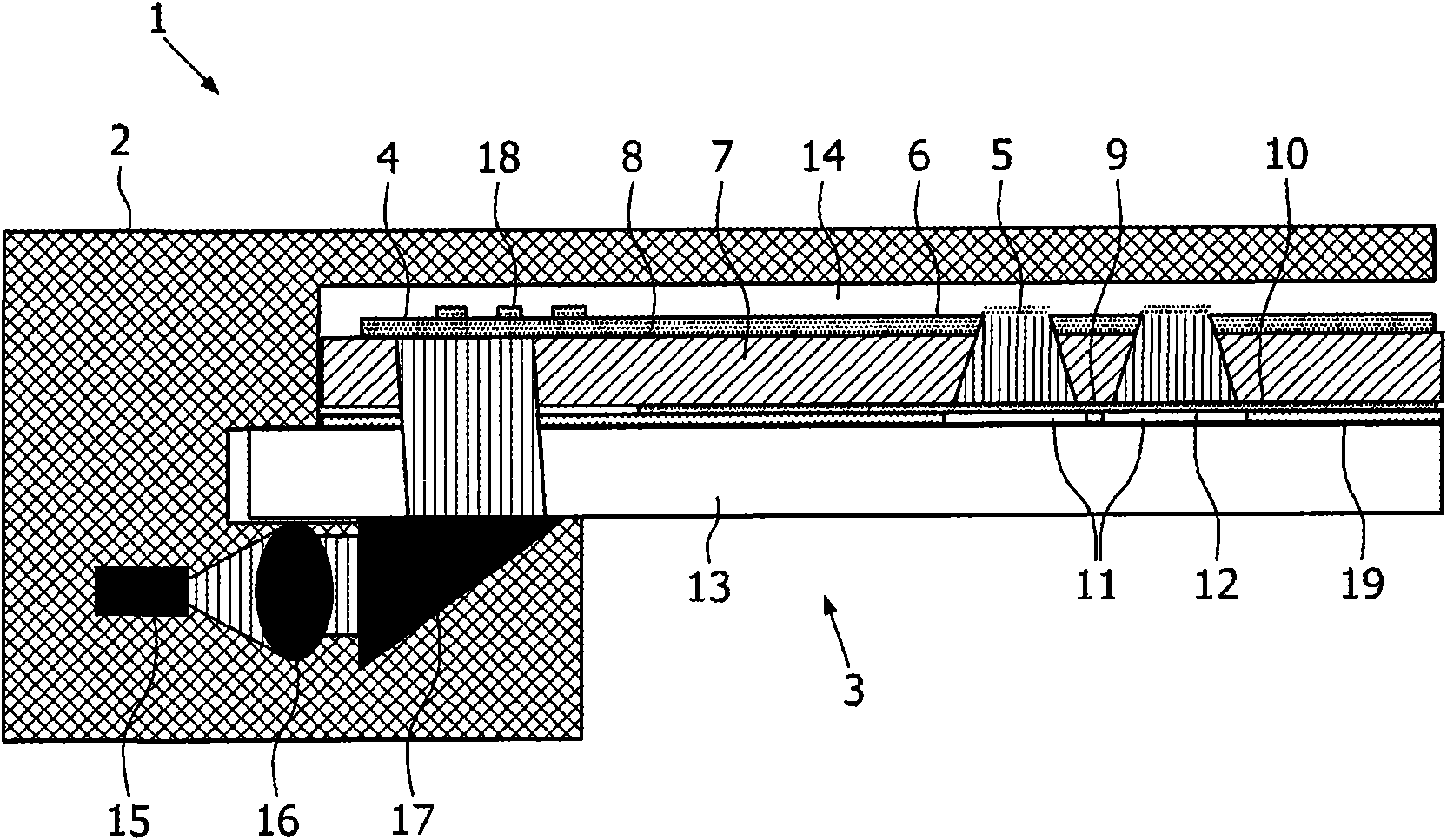Biosensor with evanescent waveguide and integrated sensor
A sensor and waveguide technology, which is applied in the field of chemical or biological sensors for detecting biomolecules, can solve problems such as complex positioning, complex coating layers of nanowell microarrays, etc., and achieve the effect of minimizing internal reflections
- Summary
- Abstract
- Description
- Claims
- Application Information
AI Technical Summary
Problems solved by technology
Method used
Image
Examples
Embodiment Construction
[0129] figure 1 A sensor system 1 for evanescent field sensing that can be used for diagnostic applications is shown with a housing 2 . The housing is placed over the integrated waveguide sensor 3 . The integrated waveguide sensor 3 includes a polymer waveguide layer 4 above the cladding layer 7, wherein the polymer waveguide layer 4 is made of polyethersulfone (PES), its thickness is 250nm, and its refractive index n2=1.65, the cladding layer 7 Made of polymethyl methacrylate (PMMA), its thickness is 1 mm, and its refractive index is n3 = 1.49. On the upper outer surface 6 of the polymer waveguide layer 4 capture compounds 5 are provided for detection of specific chemical species. On the upper and outer surface of the polymer waveguide layer 4, a grid structure consisting of a plurality of depressions 18 is provided for enhancing the coupling of light waves into the transparent polymer waveguide. Alternatively, a grid structure may also be present at the interface between...
PUM
| Property | Measurement | Unit |
|---|---|---|
| thickness | aaaaa | aaaaa |
| thickness | aaaaa | aaaaa |
| thickness | aaaaa | aaaaa |
Abstract
Description
Claims
Application Information
 Login to View More
Login to View More - R&D
- Intellectual Property
- Life Sciences
- Materials
- Tech Scout
- Unparalleled Data Quality
- Higher Quality Content
- 60% Fewer Hallucinations
Browse by: Latest US Patents, China's latest patents, Technical Efficacy Thesaurus, Application Domain, Technology Topic, Popular Technical Reports.
© 2025 PatSnap. All rights reserved.Legal|Privacy policy|Modern Slavery Act Transparency Statement|Sitemap|About US| Contact US: help@patsnap.com



